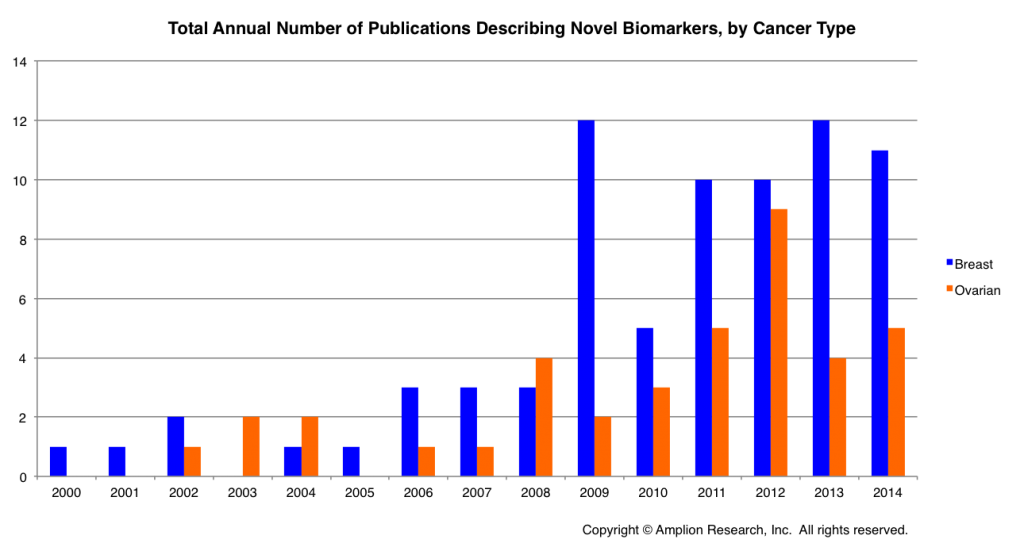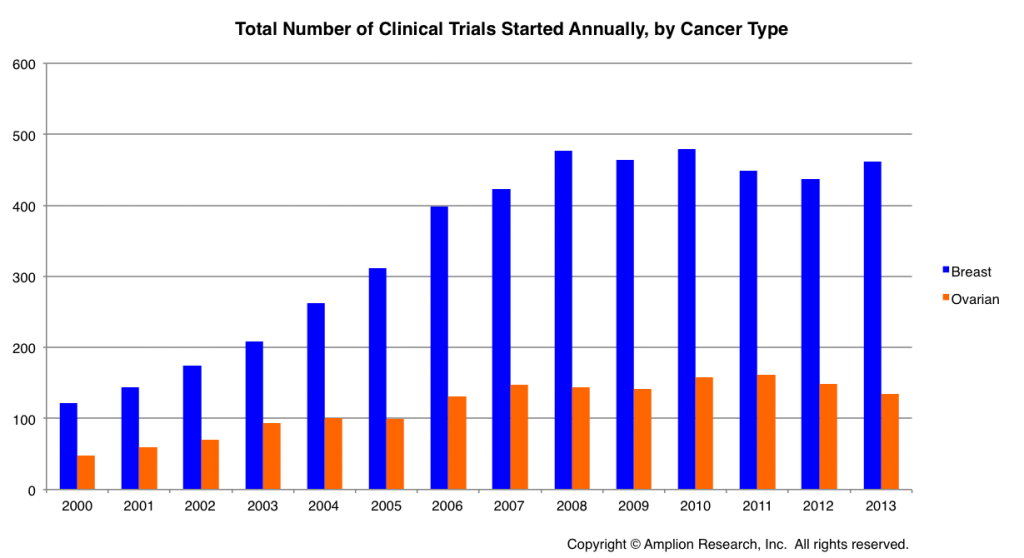
Ovarian cancer is the most fatal gynecological cancer, and among the most fatal of all cancer types. The five year survival rate for ovarian cancer is 44.6%, which (remarkably) is exactly half that of breast cancer.
This means that while there are over 10 times as many new cases of breast cancer every year in the U.S. than there are new cases of ovarian cancer, the ratio of deaths to new cases is almost 4 times higher for ovarian cancer.
I’ve been spending the last couple of weeks trying to understand the current state of the art in diagnosing and treating this disease, and it must be said that investments in ovarian cancer diagnosis and treatment are lagging well behind those being made in breast cancer.
There are only 9 FDA-approved tests for ovarian cancer, and none of them are suitable for early detection. All of them rely heavily on the markers CA-125 and HE4, both of which are useful for prognosis but not for screening due to lack of sensitivity. The first indication for many women that they have ovarian cancer is abdominal bloating from ascites build-up from late stage tumors. We desperately need markers that can identify the presence of this disease early.
Unfortunately there have been almost half as many publications announcing novel biomarkers for ovarian cancer as for breast cancer since 2000, and the use of targeted therapeutics in clinical trials lags far behind breast cancer as well.
BiomarkerBase includes over 5 times as many biomarkers in clinical trials for breast cancer than for ovarian cancer. Trials for ovarian cancer are also much more likely to include compounds that are being parachuted in from other cancer types, and when biomarkers are being used in those trials they are almost always limited to CA-125, HE4, or BRCA mutations. Novel biomarkers for diagnostic or therapeutic screening are almost non-existent (although there are a few).
The total number of clinical trials started each year for ovarian cancer has also fallen far behind those for breast cancer, and has leveled off and even declined slightly over the last five years.
More investments clearly need to be made into this disease. In the next post we will look in more detail at the few novel biomarkers and compounds being developed for ovarian cancer, so stay tuned.



